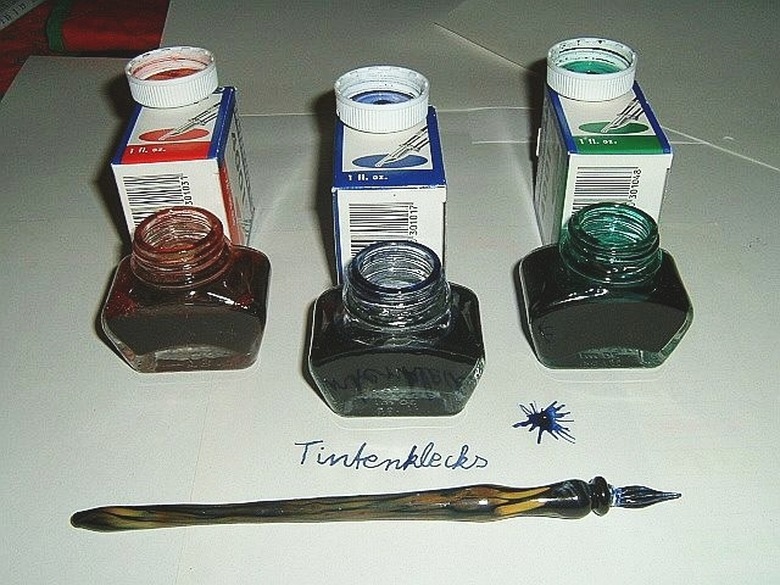Where Does Ink Come From?
Ink, like paint, is manufactured from a variety of different ingredients depending on what it will be used for. It comes in all sorts of colors and it can either be permanent or washable. There also are some environmental considerations related to ink. So, while all ink comes from a factory of some kind, the more important question about where ink comes from may be where it will end up.
Size
Size
Every year 250,000 tons of ink are used in the United States. Since the 1994 vegetable ink printing act was passed by Congress, 22% of the ink used in the United States comes from soy oil. This law is an effort to reduce the use of toxic solvents in the manufacture of ink. It was passed to advance an environmental goal.
Types
Types
Ink can be thought about in two categories: conventional ink for use in pens, for instance; and digital ink. Both types of ink start with a base into which coloring agents, ingredients that control how it dries or how fast it flows, and other additives are mixed. Both conventional and digital ink can be made with a water base. Both types can also be made using a solvent base. Finally, both types can be made using an ultra-violet cured base.
Features
Features
Oil based inks are not used for digital printing, just for conventional use. The soy bean industry lobbied hard to get ink manufacturers to develop soy based recipes for ink. They have been so successful that now, soy ink accounts for a fifth of the American ink market share. Petroleum oil based ink is also widely used in ink manufacturing. The whole printing industry actually grew up after it was discovered that heated linseed oil made a stable base for ink in around 1460. This is the oil that Gutenberg used to print his earliest Bibles.
Function
Function
Ultra-violet cured bases for ink can be used in either conventional ink or digital ink. This kind of ink works the best on films or plastic surfaces. UV based inks do not air dry like other inks. Instead, they produce a thick, flexible ink that, like plastic, stays where it is put. Water based ink cannot be used to print or write on film at all.
Expert Insight
Expert Insight
Solvent based inks are the best to use if you are printing on a non-absorbant surface like a white board. Wet-erase pens and dry-erase pens have solvent based ink. When their labels indicate that they conform to ASTM D-4236, they are safe enough for children to use. If, however, the solvent base of the ink is highly toxic, the pen's label will contain a specific warning to that effect.
Cite This Article
MLA
Barker, Lesley. "Where Does Ink Come From?" sciencing.com, https://www.sciencing.com/does-ink-come-4676439/. 24 April 2017.
APA
Barker, Lesley. (2017, April 24). Where Does Ink Come From?. sciencing.com. Retrieved from https://www.sciencing.com/does-ink-come-4676439/
Chicago
Barker, Lesley. Where Does Ink Come From? last modified March 24, 2022. https://www.sciencing.com/does-ink-come-4676439/
